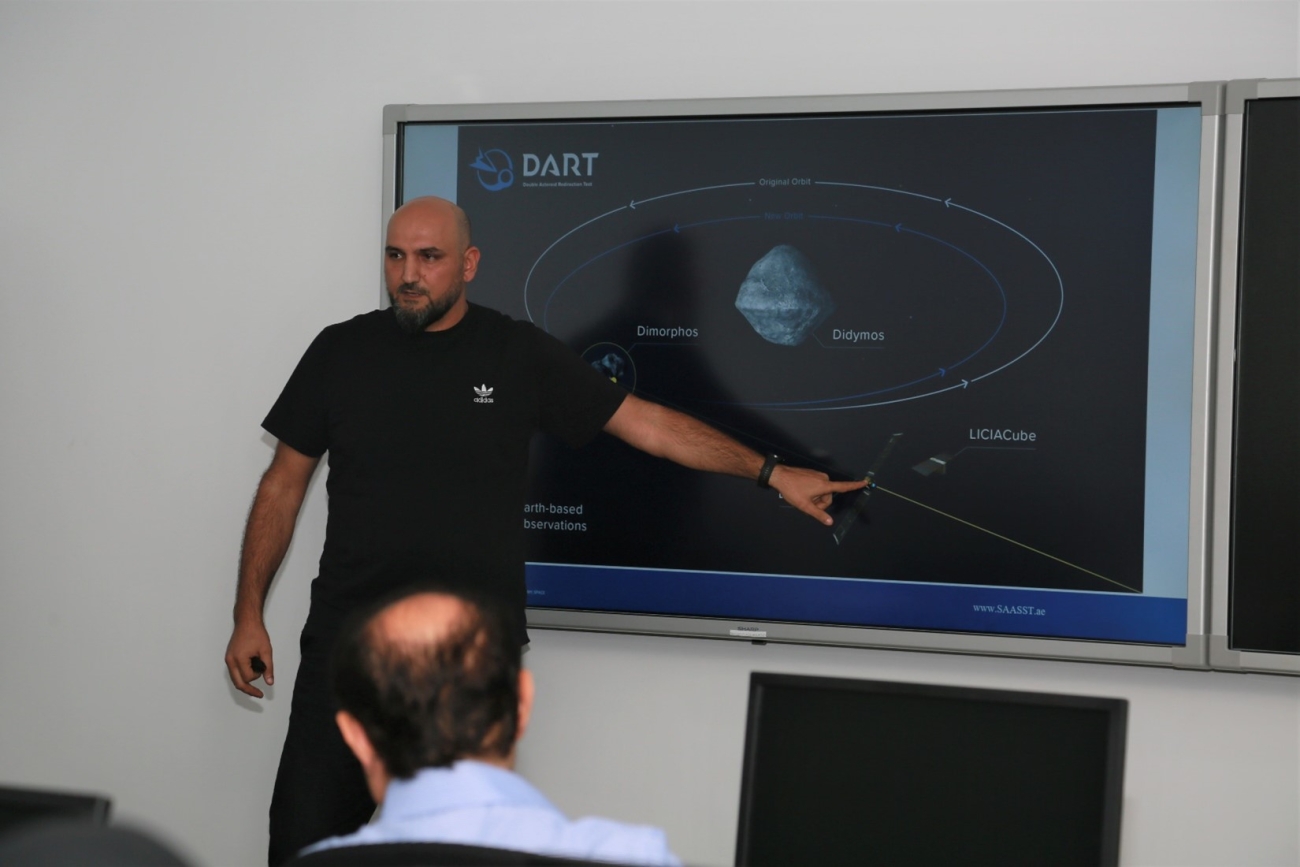The lecture was given by Mr. Mohamed Talafha, a research assistant at the SAASST Sharjah Optical Observatory. DART, the Double Asteroid Redirection Test, is NASA's first test mission for the planetary defense to test and validate a method to protect Earth in case of an asteroid impact threat.
The planned 14,000-mile-per-hour collision with an object named Dimorphos made even more of a bull's-eye shot than expected. In November 2021, NASA launched the DART mission to shoot the small asteroid with a refrigerator-size spacecraft. On Sept. 26, the spacecraft smashed into Dimorphos, hoping to adjust its orbit. This strategy could protect the planet from incoming asteroids or comets. One small shift in a space rock's trajectory could, someday, mean one giant sigh of relief for humankind if it pushes an asteroid off a collision course with Earth.
Before DART's impact, Dimorphos orbited a larger asteroid called Didymos every 11 hours and 55 minutes. An onboard camera took pictures of the fast-approaching asteroid on the crash day. As the spacecraft approached, the asteroid's surface filled the screen, boulders coming into focus before the transmission cut out. DART and its camera had smashed into the very surface it was showing. The spacecraft connected with Dimorphos and altered the space rock's orbit, shortening its trip around a larger asteroid by 32 minutes. This time shift was exactly what the DART mission aimed to accomplish. Scientists hoped the collision would push Dimorphos closer to Didymos and speed up its orbit. They have been crunching data and taking more observations of the double-asteroid system to understand how effective this particular defense mechanism was.



